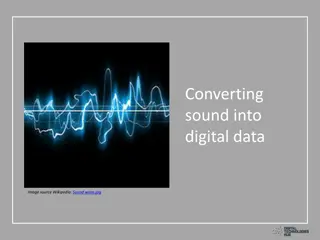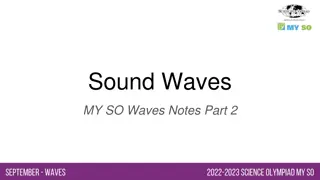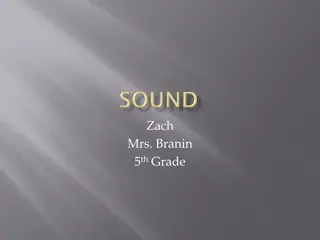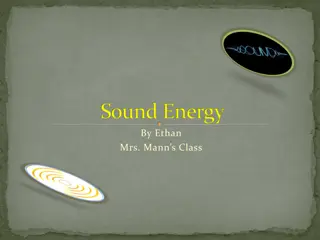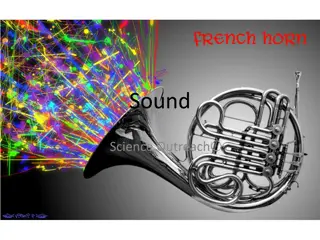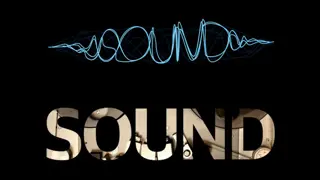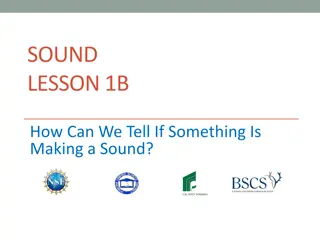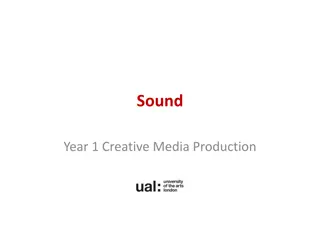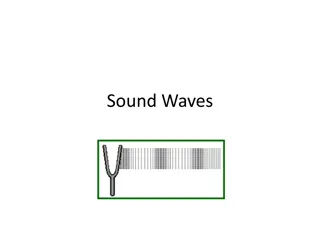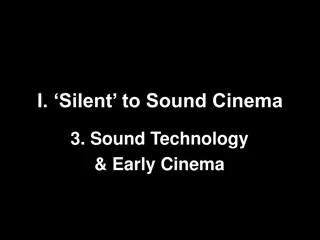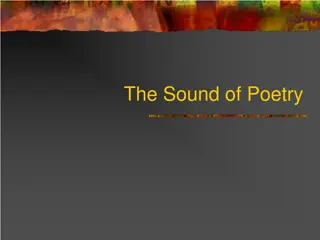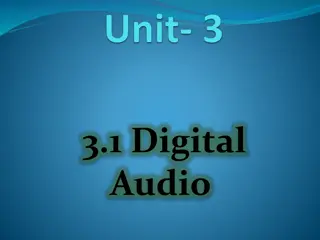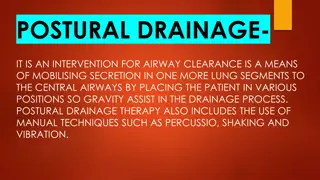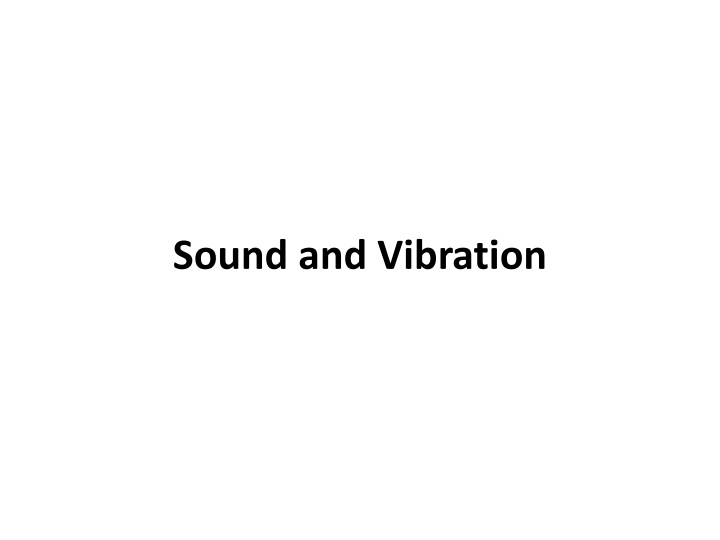
The Science of Sound and Vibration
Explore the fascinating world of sound and vibration, learning how they are interconnected and how they travel through different mediums. Discover how objects create sound through vibrations, how sound waves propagate, how we hear sound, the speed at which sound moves through air and water, and what factors determine the loudness of a sound. Delve into the science behind volume, amplitude, and the unique ways in which our ears perceive sound.
Uploaded on | 0 Views
Download Presentation

Please find below an Image/Link to download the presentation.
The content on the website is provided AS IS for your information and personal use only. It may not be sold, licensed, or shared on other websites without obtaining consent from the author. If you encounter any issues during the download, it is possible that the publisher has removed the file from their server.
You are allowed to download the files provided on this website for personal or commercial use, subject to the condition that they are used lawfully. All files are the property of their respective owners.
The content on the website is provided AS IS for your information and personal use only. It may not be sold, licensed, or shared on other websites without obtaining consent from the author.
E N D
Presentation Transcript
What is sound? Sound is caused by vibration. Vibration is a kind of motion. It is a fast back- and-forth motion. Objects that vibrate make sound. Sound always comes from a sound source that is vibrating. When the vibration stops, the sound stops.
How can objects be made to vibrate? Plucking (pluck rubber band) Hitting (strike xylophone) Blowing (blow whistle) Talking/singing/whistling is a special kind of blowing through our mouth. Hum and put your hand on your throat. What you feel is your vocal cords vibrating creating sound.
How does sound get around? When an object vibrates, it moves the air next to it. Air is made up of tiny molecules so small we can t see them without microscopes. Sound moves by these molecules bumping into each other. (Like kids only smaller.) Sound bounces off walls and other objects and keeps going until it runs out of energy. (echo, echo, echo, echo, echo) Sound moves in waves like when you throw a rock into a pond and the waves ripple out from the rock in all directions. (Use a Slinky with a student to demonstrate.) Waves come in all different sizes and shapes. This affects how loud and what kind of sound we hear.
How do we hear sound? Our ear is specially designed to hear sound through air. Our outer ear helps direct sound waves into our inner ear. Our ear drum vibrates, causing electrical impulses to be sent to our brain which we interpret as sound.
How fast does sound move? Sound through air moves at 741 mph. That s about one mile every five seconds. (How fast can you go?) You see lightning, and then hear thunder. You can tell how far away it is by counting the seconds between seeing it and hearing it. Sound moves through water about 4.5 times faster (3335 mph). Have you ever talked under water? There is no air in space, so there is no sound. Movies just add that for fun. Sound can move through solid objects. Native Americans put their ears to the ground to listen for approaching horses.
What makes sound quiet or loud? Volume is the word used to describe how loud or soft a sound is. The more energy put into a sound, the more vibrations are created. More vibrations will make the sound louder and go farther. In a sound wave, the taller the wave the louder the sound. We use the word amplitude to describe how tall a wave is. (Use a Slinky with a student to demonstrate).
What makes a sound low or high? Pitch is the word used to describe whether a sound is high or low. Frequency = pitch. Frequency is how often or frequent a sound wave moves up and down. The more frequent a wave moves up and down, the higher the pitch. (Slinky one more time!)
Length and Pitch The faster the vibration, the higher the pitch. (faster = higher, slower = lower) Length changes speed of vibration. Short objects vibrate faster than long objects. (short = higher, long = lower) Size changes speed, too. (small = higher, big = lower)
Recorded Sounds Microphones can record sounds. Sounds can be turned digital by converting them into electrical pulses. A sound can be played back using speakers, and made louder using an amplifier. Computers can be used to change sounds. For example, you can change the pitch of a recording to be lower or higher.
Music Combining sounds together, we can make music! Time to dance!



